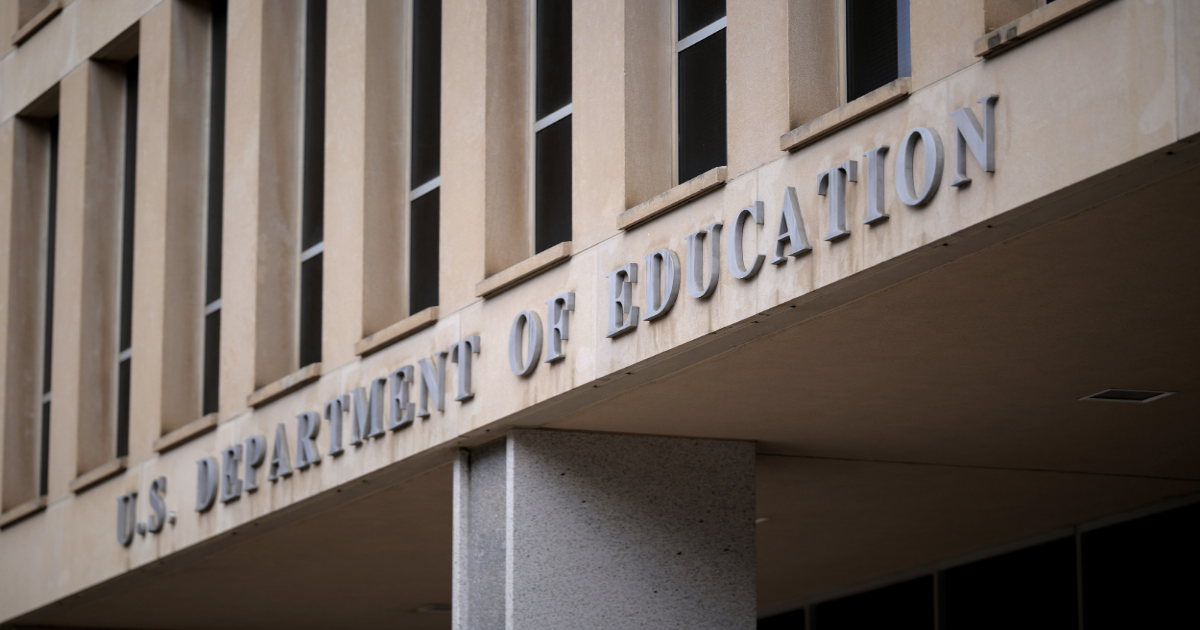The Department of Education announced it had initiated mass layoffs on Tuesday, reducing its staff by about half and raising questions about what it may mean for student loans.
Newsweek has contacted the Department of Education for comment via email.
Why It Matters
The layoffs are a prelude to President Donald Trump‘s plans to reduce the size of the federal workforce and dismantle the Department of Education. He campaigned on a pledge to close the department, arguing the agency’s power should be transferred to states and schools.
The agency’s role is mainly financial: it distributes billions in federal money to schools and colleges and manages the federal student loan portfolio. As of January 2024, the department held $1.5 trillion in federal loans for nearly 43 million borrowers, according to the Government Accountability Office.

The U.S. Department of Education headquarters on March 6, 2025, in Washington, D.C. The U.S. Department of Education headquarters on March 6, 2025, in Washington, D.C. Chip Somodevilla/Getty Images
What to Know
The Trump administration had already been cutting the department’s staff through buyout offers and the termination of probationary employees.
After these cuts, the department will be left with roughly 2,183 workers, it said in a statement on Tuesday. The department’s workforce was 4,133 when Trump took office in January.
The department said all of its divisions were impacted by the cuts, and that some require “significant reorganization to better serve students, parents, educators, and taxpayers.”
It added the agency would continue to deliver on all programs that fall under its purview, including the management of student loans, the distribution of federal aid and oversight of Pell Grants.
It wasn’t immediately clear if the department’s Office of Federal Student Aid, which handles loan disbursement, servicing and borrower assistance, was among the divisions being reorganized.
Some advocates have blasted the cuts, and questioned the claim that the department’s operations would not be affected by the layoffs.
“I don’t see at all how that can be true,” Roxanne Garza, the director of higher education policy at Education Trust, a research and advocacy organization, told the Associated Press, adding that much of what the department does is labor intensive. Garza was chief of staff in the Office of Postsecondary Education under President Joe Biden.
National Education Association President Becky Pringle said gutting the department will “make higher education more expensive and out of reach for middle-class families.”
Education Secretary Linda McMahon told employees on March 3 that the department’s “final mission” was to eliminate “bureaucratic bloat” and transfer the agency’s authority to states.
Experts previously told Newsweek that dismantling the department could lead to disruptions if the handling of federal student loans is reassigned elsewhere, such as to the Treasury Department.
And if the federal government scales back its role in student loans, borrowers may be increasingly forced to turn to private lenders, potentially making college less affordable.
“ We have seen significant alignment between the administration’s actions and what was in Project 2025,” Peter Granville, a fellow at The Century Foundation, where he analyzes federal and state policy efforts to improve college access and affordability, told Newsweek.
“That document says the federal government should get out of the student loan business entirely. That would send student loans to the private market, which would be terrible for students from low-income families.”
What People Are Saying
Education Secretary Linda McMahon said in a statement on Tuesday that the “reduction in force reflects the Department of Education’s commitment to efficiency, accountability, and ensuring that resources are directed where they matter most: to students, parents, and teachers.
“I appreciate the work of the dedicated public servants and their contributions to the Department. This is a significant step toward restoring the greatness of the United States education system.”
National Education Association President Becky Pringle said in a statement: “Donald Trump and Elon Musk have aimed their wrecking ball at public schools and the futures of the 50 million students in rural, suburban, and urban communities across America by dismantling public education to pay for tax handouts for billionaires.
“Gutting the Department of Education will send class sizes soaring, cut job training programs, make higher education more expensive and out of reach for middle-class families, take away special education services for students with disabilities, and gut student civil rights protections.”
Liz Schuler, the president of the AFL-CIO, the nation’s largest federation of labor unions, said in a statement on Tuesday: “Firing half of the staff so that the Department of Education cannot function will jeopardize the resources, programs and protections that give millions of students the opportunity to succeed.
“The Department of Education provides critical support to educators and school staff, and financial aid and student loans that put college and trade schools within reach for working families who wouldn’t otherwise be able to afford it.”
Representative Brendan Boyle, a Democrat and the ranking member on the House Budget Committee, wrote on X: “No one voted for this. Millions rely on Pell Grants, federal student loans, and special education funding. Dismantling the Department of Education will hurt our kids and create chaos for students, teachers, and families across the country.”
What’s Next
At McMahon’s confirmation hearing last month, she acknowledged that only Congress has the power to abolish the Department of Education, but said it might be due for cuts and a reorganization. It was reported last month that the Trump administration was weighing using an executive order to dismantle the department.
President Donald Trump told reporters in the Oval Office last week that he has discussed plans to transfer the handling of student loans to either the Treasury or Commerce Departments, or the Small Business Administration (SBA).
While the future of how student loans are to be administered remains unclear, borrowers are expected to continue making payments.
